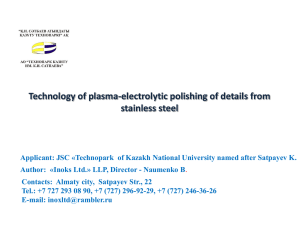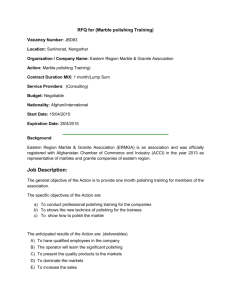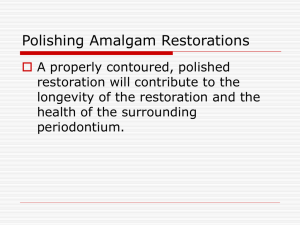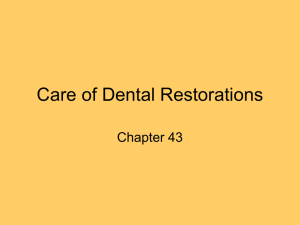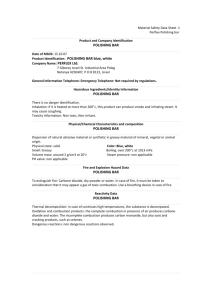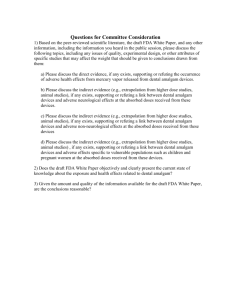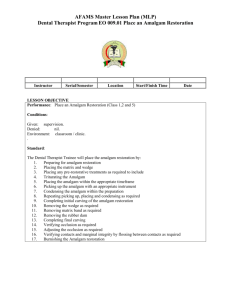Summary – Restoration Care: What the Dental Hygienist needs to
advertisement
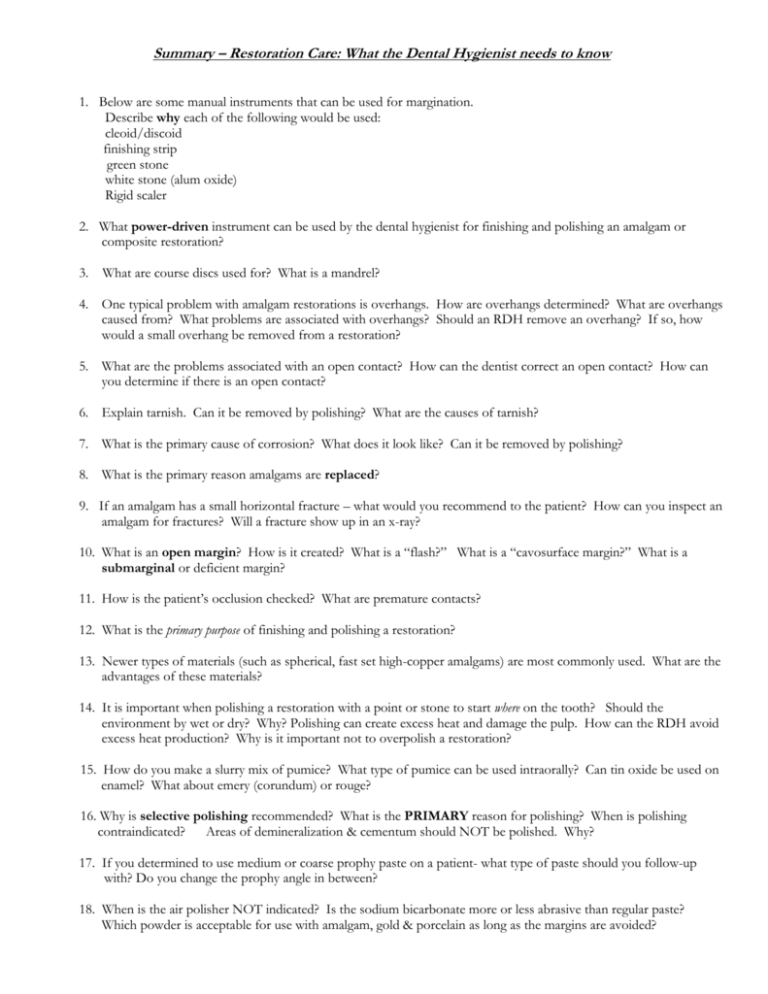
Summary – Restoration Care: What the Dental Hygienist needs to know 1. Below are some manual instruments that can be used for margination. Describe why each of the following would be used: cleoid/discoid finishing strip green stone white stone (alum oxide) Rigid scaler 2. What power-driven instrument can be used by the dental hygienist for finishing and polishing an amalgam or composite restoration? 3. What are course discs used for? What is a mandrel? 4. One typical problem with amalgam restorations is overhangs. How are overhangs determined? What are overhangs caused from? What problems are associated with overhangs? Should an RDH remove an overhang? If so, how would a small overhang be removed from a restoration? 5. What are the problems associated with an open contact? How can the dentist correct an open contact? How can you determine if there is an open contact? 6. Explain tarnish. Can it be removed by polishing? What are the causes of tarnish? 7. What is the primary cause of corrosion? What does it look like? Can it be removed by polishing? 8. What is the primary reason amalgams are replaced? 9. If an amalgam has a small horizontal fracture – what would you recommend to the patient? How can you inspect an amalgam for fractures? Will a fracture show up in an x-ray? 10. What is an open margin? How is it created? What is a “flash?” What is a “cavosurface margin?” What is a submarginal or deficient margin? 11. How is the patient’s occlusion checked? What are premature contacts? 12. What is the primary purpose of finishing and polishing a restoration? 13. Newer types of materials (such as spherical, fast set high-copper amalgams) are most commonly used. What are the advantages of these materials? 14. It is important when polishing a restoration with a point or stone to start where on the tooth? Should the environment by wet or dry? Why? Polishing can create excess heat and damage the pulp. How can the RDH avoid excess heat production? Why is it important not to overpolish a restoration? 15. How do you make a slurry mix of pumice? What type of pumice can be used intraorally? Can tin oxide be used on enamel? What about emery (corundum) or rouge? 16. Why is selective polishing recommended? What is the PRIMARY reason for polishing? When is polishing contraindicated? Areas of demineralization & cementum should NOT be polished. Why? 17. If you determined to use medium or coarse prophy paste on a patient- what type of paste should you follow-up with? Do you change the prophy angle in between? 18. When is the air polisher NOT indicated? Is the sodium bicarbonate more or less abrasive than regular paste? Which powder is acceptable for use with amalgam, gold & porcelain as long as the margins are avoided? 19. What can be used to determine if a composite is present? Does it “feel” different with your 11/12 or 23 explorer? In the chemotherapeutic module, we learned that alcohol can soften composite resins, what other materials can damage or stain a composite resin? 20. Can a large overhang be removed on an amalgam or composite by an RDH? Why or why not? 21. If a patient presents with #14 MOD, that she states is “more than 15 years old,” – would you suggest replacing it? 22. A finishing strip should only be used in very selective circumstances. Why is caution needed with a finishing strip? What is the technique necessary when using a finishing strip? (*Dental tape can also be used with a polishing agent in place of a finishing strip) 23. Why should the HVE be used when removing an old amalgam from a tooth? Why should you avoid heating an amalgam? 24. If an ultrasonic is used around a composite, amalgam, or porcelain restoration, what damage can be done to the integrity of the restoration? 25. Compare and contrast different restorative materials used in dentistry such as amalgams, composites, glass ionomers, porcelain, and gold. What are the advantages/disadvantages of each? Amalgam Composite Glass ionomers Porcelain Gold Which of the above have galvanism problems? 26. List the correct order for polishing an amalgam when using points, stones, or cups. Where are points used? Where are cups used? 27. All of the following influence the time and longevity of a restoration. What other factors will influence the restoration? Answers given below (yes, this is a give-meee question!) Initial prep and placement of rest Design of cavity prep (smoothness, margins) Mix and manipulation of material Prevention of contamination during insertion Finishing and polishing of the restoration 28. Can dental hygienists place and finish restorations legally in the state of TN?
